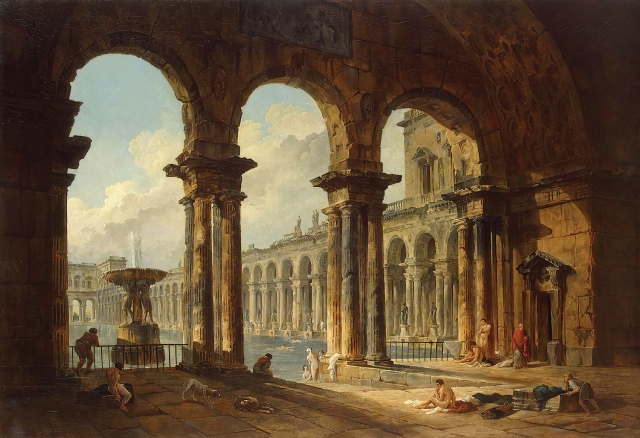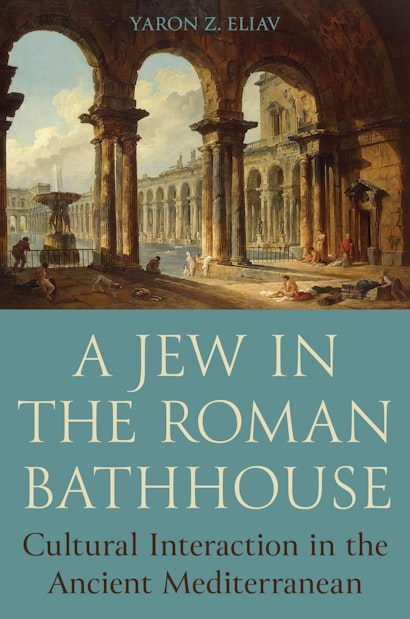Who hasn’t heard of a rabbi? In American culture, they are ubiquitous. TV shows are filled with them (Seinfeld, Curb Your Enthusiasm, HBO’s Boardwalk Empire and Rome, to name but a few). Movies, too and not only the obvious sources, like Woody Allen or the Coen Brothers. In literature, high and low, from Nobel Prize winner Saul Bellow to airport reads by John Grisham, rabbis are everywhere. If you are a religious Jew, they are an anchor of your daily life. But even if you are an adamant atheist—or even if you are non-Jew with a Jewish friend—they are hard to avoid, whether at a wedding, or a bar/bat Mitzvah, or a burial ceremony. They are often bearded and all in black, but sometimes they look not all that different from the rest of us. Some of them are even—gasp!— women. You treat them with respect. Usually they are full of self-awareness, carrying their position with dignity, glowing with an aura of importance (even if lacking, at times, a sense of humor, which compels so many of us to poke fun at them). Modern Orthodox rabbis view themselves as the continuation and the ultimate and only true manifestation of ancient rabbis (more on the latter below); from them modern orthodox rabbis borrowed the title “rabbi,” but more so what they believe to be a unique formulation of Jewish life, a system built on the principles and directives established by those ancient forerunners and embraced by their modern counterparts.
Anyone who has come across an orthodox rabbi—whether in real life or in literature, theatre, or film (think Fiddler on the Roof)—would have a hard time placing these bearded figures, clad in black attire and immersed in pious religiosity, in the deep hollows of a Roman public bathhouse. The bathhouse, an impressive architectural complex that sprung up in every corner of the Roman world from the second century CE on, offered both hot and cold water installations as well as a wide range of other services and activities—a sauna and massage parlors, swimming pools, open courts for recreation and sports, gardens, meeting rooms, food and oil stands, and at times even libraries and brothels. Men and women normally attended these facilities together and used them with their bodies fully or mostly exposed. Amidst this abundance, bathhouses embodied many aspects of Roman civilization—from engineering to food to fashion, from sculpture to sports, from nudity and sex to medicine and magic. The figure of the rabbi, whether modern or ancient, seems far removed from such a corporeal reality, with its promiscuous atmosphere and hedonistic experiences—or at least that’s what we would assume.
Yet, the vast body of writings, known collectively as Rabbinic Literature, paints an entirely different picture. This group of texts comprises of some 40 documents of various sizes (some encompass hundreds, at times thousands of folio pages), about half of them of a legal nature, and the other half featuring non-legal material—stories, homilies, parables, proverbs, and other genres. During a long and convoluted process, spanning the second to seventh centuries CE, the figures often referred to collectively as “the rabbis” (and more precisely “ancient rabbis,” to distinguish them from modern rabbis of our own time) produced and then gathered, collected, and edited these texts. Considered by many as masterpieces of literature and thought, these tomes—the Mishnah, the Tosefta, the Midrashim, and the Palestinian and Babylonian Talmuds—contain hundreds of references to Roman bathhouses. When gathered together and analyzed alongside other ancient sources—the plentiful archaeological remains of bathhouses from all around the Mediterranean, as well as numerous excerpts from Graeco-Roman literature—rabbinic material provides a fascinating portrayal of the institution of the Roman bathhouse, its manifold functions and activities in everyday life, and the perceptions of it held by at least some Jews living on the eastern reaches of the Roman Empire, in a province then called Palestine. Between the lines emerges a remarkable story of cultural interaction the places the ancient rabbis in stark contrast to the sensibilities that define modern ones.
The modern reader, conditioned by the projection of today’s orthodox Jewish values back on antiquity and particularly on the rabbis, expects ancient rabbis to express sustained outrage and disapproval towards a place where nudity and licentiousness prevailed. It is easy to assume that ancient rabbis would offer detailed and strict decrees, dismissing the baths and prohibiting the crowds from attending. However, such judgments are not to be found. Instead, ancient rabbis enthusiastically patronized the bathhouse and shared its amenities and pleasures, just like all other groups during their era. Rabbinic literature supported by archaeological remains shows that Jews built bathhouses with no hesitation and rabbis frequented them with ease and comfort. Rabbinic literature also voices deep knowledge of the structure of the bathhouse and expresses great appreciation for its benefits and comforts. Rabbis embraced the institution and incorporated it into their Jewish way of life by applying numerous halakhot (regulations based on Jewish law) to the bathhouse’s functions and customs. Even more surprising, my investigation shows that even the particular elements of the bath that would seem to be most problematic were an accepted part of their lives. Apparently, ancient rabbis were much less offended by female nudity than we tend to believe. And rather than condemning all statues that prevailed in baths as idols, they related to sculpture in a very nuanced way that allowed them to engage these graven images with peace and tranquility. Even magic was not foreign to these scholars, but one of many tools they applied to cope with the challenges of life.
Here is one example: An anecdote incorporated into the Mishnah, the first rabbinic text from the beginning of the third century CE, recounts a meeting in a public bath between a renowned rabbinic scholar, Rabban Gamaliel, and a Greek philosopher by the name of Proklos. In the story, both are naked, in a room adorned by a statue of the goddess Venus/Aphrodite; the philosopher questions the rabbi’s presence in a space commanded by the dignity and aura of Greek divinity. In a serious of catchy answers, Rabban Gamaliel refutes the challenges posed by the philosopher and shows himself quite comfortable with the bathhouse and its sculpture. The story may be fictional, but its message is astounding.
No matter how we may otherwise imagine the venerable Rabban Gamaliel, here he is standing buck naked before an erotic statue of Aphrodite, her bodily charms most probably on full display. A few centuries later, an Egyptian visitor to Constantinople described a similar statue of the goddess: “And another highborn Aphrodite I saw all of gold, naked, all glittering; and on the breast of the goddess, hanging from her neck, fell in coils the flowing cestus [a kind of a girdle said to be given to the goddess by her husband Hephaestus].” Archaeologists uncovered comparable statues of Venus/Aphrodite all over the Mediterranean, many of them inside or near public baths, where she ranks as one of the most popular sculptured representations. When the naked rabbi and the beautiful goddess meet in the bath, their encounter epitomizes the cultural dynamics of their time: conceptions of the body, perceptions of space, tension about identity and its resolution, debates about power and aesthetics. These all converge in a convoluted, at times elusive, and always fascinating discourse that emerged from the meeting of cultures in the Roman world in general and in the bathhouse in particular. I call these dynamics, the Poetics of Cultural Interaction, and as such they present to us a very different mindset, in many ways radically opposite than the one that defines modern Orthodox rabbis that claim to present the true essence of their ancient counterparts.
Yaron Z. Eliav is associate professor of rabbinic literature and Jewish history of late antiquity at the University of Michigan. He is the author of God’s Mountain: The Temple Mount in Time, Place, and Memory and the producer of the documentary Paul in Athens.

